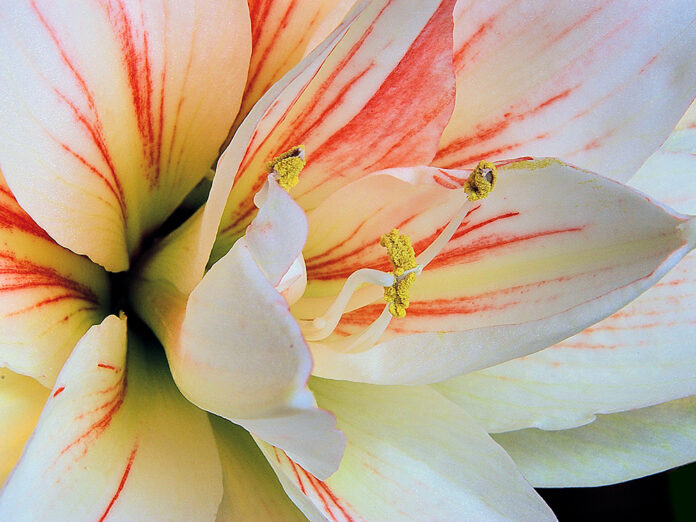
By Harriet Phelps
The winter weather conditions outside do not matter if you have a blooming plant. I need only light and a blooming plant to feel good.
Here are three plants that provide necessary relief for me. The Amaryllis and Paper Whites are boxed beauties that provide blooming delight. The other is the Poinsettia.
The Amaryllis and Paper Whites come in many delightful colors. These bulbs are usually grown indoors, however. They are tropical and adapt in Zones 9 and 10. We can force them indoors by planting them in pots 1-2 inches larger than the bulb. Use well-drained soil and water when the topsoil is dry. Tropical means above 60 degrees and moist, not wet.
After the plant has bloomed, cut it below the pod. Large leaves will appear. Fertilize it monthly. We can plant it outside in shade in summer. Once it turns yellow, bring it inside. Cut it off and place in a cool area (55-60 degrees). Allow it to go dormant for eight weeks to rest.
Paper Whites, Narcissus, are a forced bloom as well. Forcing the bloom starts with the provided packing or a 6-inch diameter pebble-filled bowl; wedge in four bulbs. Add water until the bulbs are covered and store in a dark cool place for two weeks. Replenish the water, then bring the plants to a sunny location as the leaves appear.
A favorite plant of the holidays is the Poinsettia, which is also tropical, originating in Mexico. The plane is finicky with specific needs. The red leaves are bracts and typically known as Christmas Stars, which bloom in December and January. The flowers are actually the tiny, yellow, berry-like structures at the center of each bract called cyathia. When buying, be aware exposure to draught and cold temperatures will cause the leaves to drop. The yellow buds look tight when you have purchased a quality plant.
In spring, return Poinsettias to a sunny area and water well. Then cut back the canes to 6 inches above the leaf joint to ensure bushing. After reaching 6-10 inches, pinch the tips to force branching. Once the outside temperature is above 60 degrees, move the plant outdoors to a shady and protected area and sink the pot into the soil. When nights become longer in fall, bring it indoors again.
Poinsettias require 12 hours of darkness to bloom. Move the plant to a dark area or cover with a box or paper bag. Then allow daylight to encourage re-blooming. Once blooming occurs, provide a semi-cool, draught-free and humid location in bright, indirect light with plenty of moisture. In early summer, feed the plant one tablespoon Epsom salt to one gallon of water.
Repeat six weeks later. Do not add when using commercial fertilizer. Prune as needed to promote a bushy plant.
Happy New Year from Pinal County Master Gardeners in Maricopa!
This column appears in the January issue of InMaricopa magazine.

![Maricopa’s ‘TikTok Rizz Party,’ explained One of several flyers for a "TikTok rizz party" is taped to a door in the Maricopa Business Center along Honeycutt Road on April 23, 2024. [Monica D. Spencer]](https://www.inmaricopa.com/wp-content/uploads/2024/04/spencer-042324-tiktok-rizz-party-flyer-web-218x150.jpg)






![Who’s the Best Mom InMaricopa? Nominate now! Marlene Marshall, Christina Olivares, and Meghan Bremer. [Bryan Mordt]](https://www.inmaricopa.com/wp-content/uploads/2023/05/BCM_8465-218x150.jpg)




![Alleged car thief released without charges Phoenix police stop a stolen vehicle on April 20, 2024. [Facebook]](https://www.inmaricopa.com/wp-content/uploads/2024/04/IMG_5040-218x150.jpg)
![Maricopa’s ‘TikTok Rizz Party,’ explained One of several flyers for a "TikTok rizz party" is taped to a door in the Maricopa Business Center along Honeycutt Road on April 23, 2024. [Monica D. Spencer]](https://www.inmaricopa.com/wp-content/uploads/2024/04/spencer-042324-tiktok-rizz-party-flyer-web-100x70.jpg)


